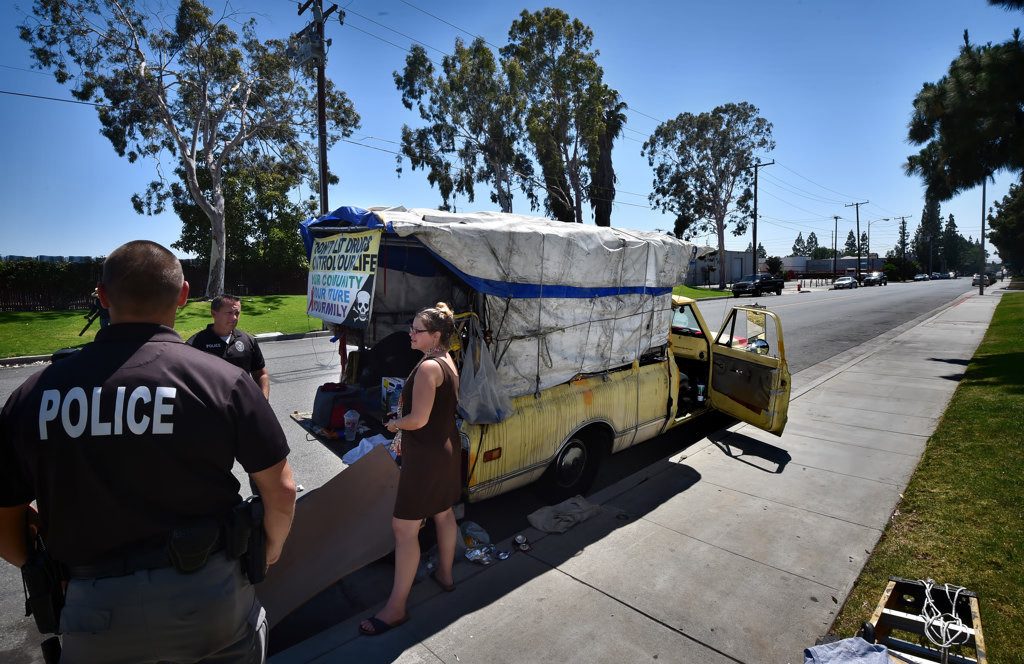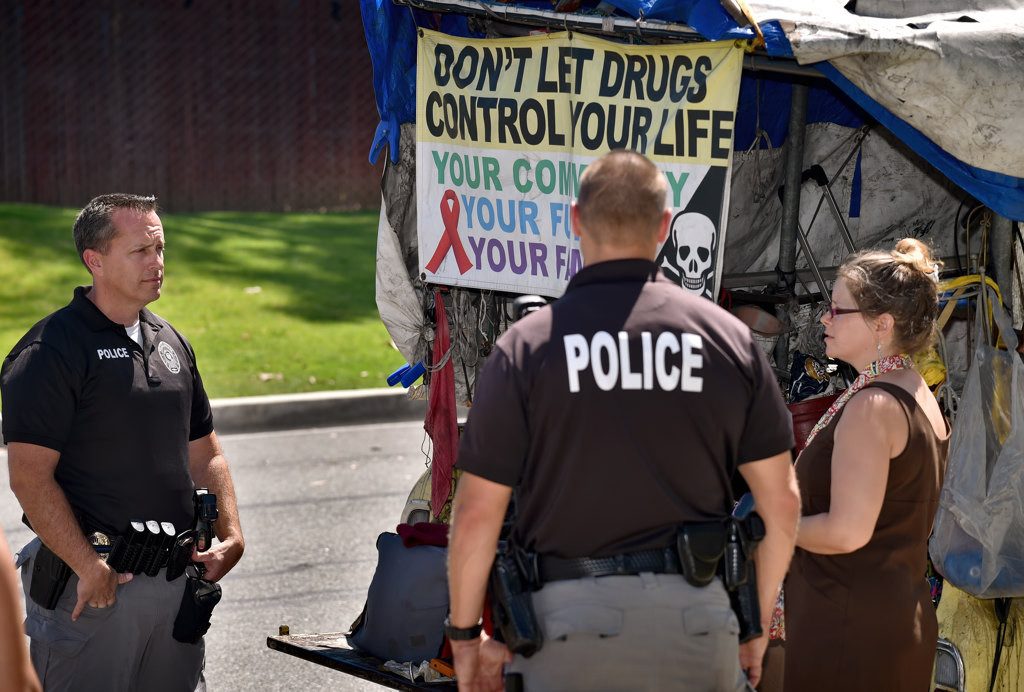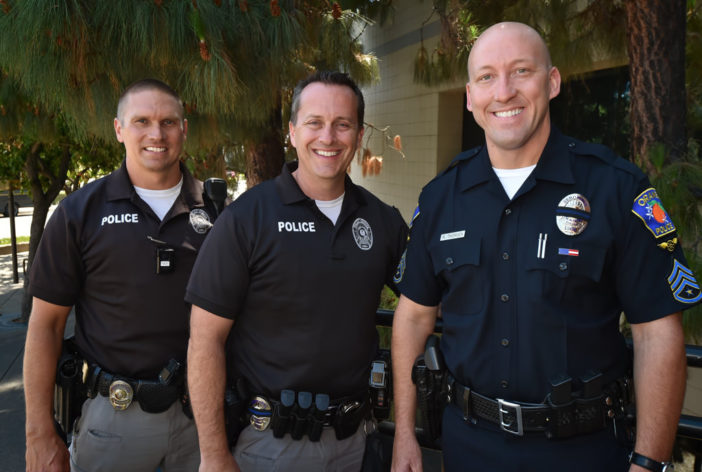The Orange PD officers casually walk up to the packed truck with a sign reading “Don’t Let Drugs Control Your Life.”
They talk a little with the man and woman they find there. The conversation is friendly and calm.
“Are you guys in need of any resources?” Cpl. Mark Bailey asks them.
The woman responds no, but thanks him for asking.
The work of Bailey and his counterpart on the OPD’s Homeless Engagement, Assistance and Resource Team (HEART), Officer Kyle Bean, is a little different than the work of a typical patrol officer. While citations may be issued when applicable, that is not the main purpose.

Jennifer Ayres, who lives in an RV/truck with her boyfriend in Orange, talks to Orange PD Cpl. Mark Bailey and Officer Kyle Bean about services that can help them. Photo by Steven Georges/Behind the Badge OC
“They’re always trying to go out and find resources for the transient population,” said Sgt. Rob Thorsen, who oversees the team.
The OPD’s two full-time Homeless Liaison Officers, Bailey and Bean, have the added benefit of working with a full-time clinician, Laurie McCaslin, from OC Mental Health’s Psychiatric Emergency Response Team (PERT).
“She’s a wealth of knowledge,” said Bailey, adding that she rides with one or both of them every day.
As a county employee, McCaslin is up-to-date with all the latest resources available to the local homeless population and also is qualified to make recommendations on mental health issues – such as if a 5150 hold is necessary.
“She knows exactly where we need to go,” Bailey said.
HEART began at the OPD in June 2013 as a result of an increase in calls regarding transients in the area, said Thorsen.
Part of what the HLOs do is forge relationships in the community with various groups and officials – including the district attorney’s office, the city attorney, veterans groups, public works, faith-based organizations, etc. – in order to further assist transients needing particular help.
“They’re really instrumental in our department of forging those relationships,” Thorsen said.
The number of transients each of the HLOs contact daily during their 10-hour shifts, six to eight of which are spent in the field, can range from five to 10 transients way up to a hundred, depending on what area they’re in.
Though it can be a revolving door at times – with people who have been assisted often dropping out of services or programs – there have been successes.
Since Oct. 1, according to Bailey, the team has helped 11 people get into shelters. One of those even applied for Housing and Urban Development (HUD) housing and was able to get into temporary housing as a first step. One man received mental health services with the help of Bean and McCaslin for long-term treatment. He actually called Bailey a couple of weeks later to thank him and his partner for the lifesaving help.

Orange PD Cpl. Mark Bailey, left, and Officer Kyle Bean talk to Jennifer Ayres, who lives in a RV/truck with her boyfriend in Orange. Photo by Steven Georges/Behind the Badge OC
“One person at a time,” said Thorsen.
Patience, empathy and a calm demeanor are prerequisites for the job.
Even when a person drops out of rehab or another service, the team keeps at it.
“With this team, we’re going to be able to keep trying,” said Bailey.
It might take time, but on that day when a transient asks for help – “Then we’ll be there,” said Bailey.
 Behind the Badge
Behind the Badge



